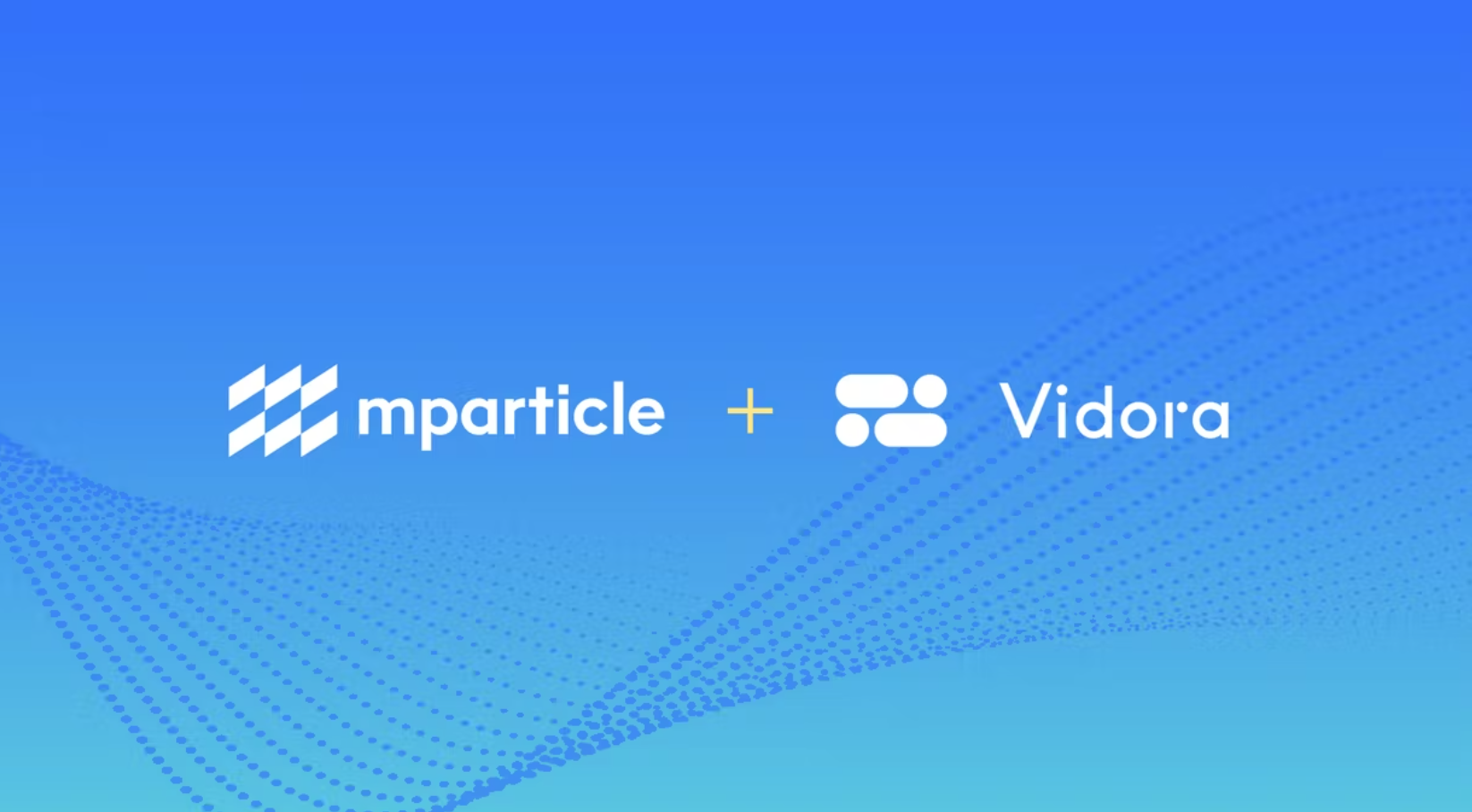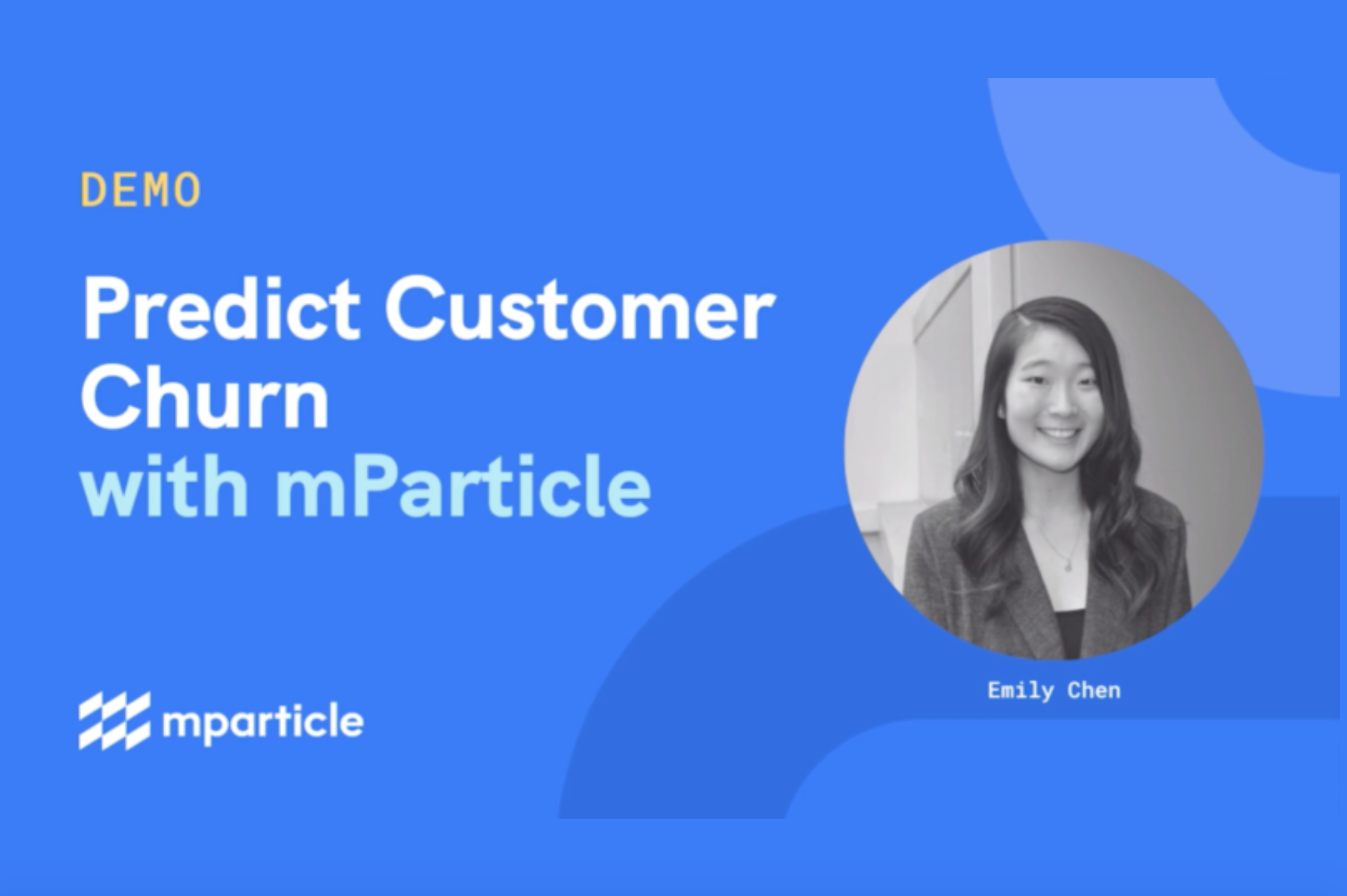
Over the past few decades, cookies played a crucial role in marketing efforts in delivering relevant and personalized experiences to consumers without knowing their preferences directly. Heightened privacy regulations are causing marketers to lose data access they’ve come to rely on. This shift in privacy regulations puts more emphasis on the collection of first-party data. One natural concern for marketers in this evolving ecosystem is whether first-party data will have enough signal to overcome some of the data loss as a result of third-party cookie deprecation.
In this post, we will discuss how marketers can maximize the value of their first-party data using real-time machine learning technology to target anonymous and first-time users.
What are First-Party and Third-Party Cookies?
Cookies are small files of information that a web browser stores in order to track users across the internet. The purpose of a cookie is to collect and monitor data on user attributes and user behaviors in order to serve an ad (or experience) to the right user at the right time. There are two main types of cookies; a first-party cookie and a third-party cookie.
First-party cookies are collected and stored on the website that is being visited. These cookies enable browsers to remember a user’s password, username, language preferences, or other settings, making it effortless for users to login. Since first-party cookies are generated and owned by the host domain, this data can be utilized by the host to tailor onsite user experiences. In addition, many websites now offer opt-in buttons for users to consent to non-essential first-party cookies, allowing for marketers to use the first-party data that is being created.
Third-party cookies, on the other hand, are placed on websites other than the current site that is being visited. These cookies are used to track consumer behavior across different sites that businesses use to build out marketing profiles and targeted ads. Third-party cookies do not offer any consent when being placed. This creates a lack of privacy and transparency around how users are being tracked. Changes in regulations and heightened awareness around security will result in marketers soon having less access to third-party cookies for advertising, marketing, and personalization efforts.
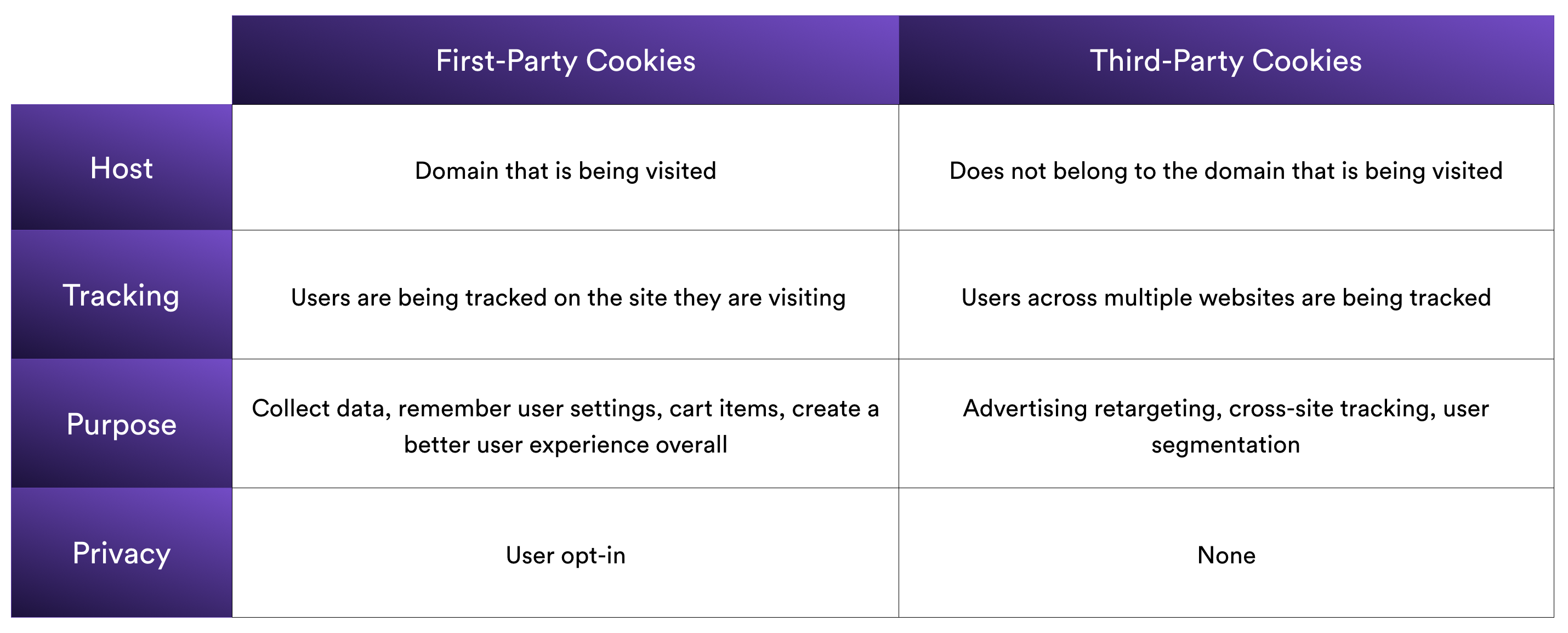
Overview of the differences between first-party cookies and third-party cookies
How to Adapt to a Cookie-less Future: Maximize First-Party Data with Vidora Cortex
Vidora empowers marketing and adtech teams to deliver personalized experiences to consumers, while still preserving their privacy through the use of first-party consumer data. Our business decisioning platform, Cortex, transforms first-party consumer data into actionable decisions for advanced ad segments, increase of down funnel conversions, onsite dynamic decisioning, next-best-action, and more.
Cortex is able to take into account both real-time and historical data when making decisions. “Real-time data” refers to user behaviors within the current session, while “historical” data refers to the user’s behavioral history from prior sessions. We’ve found that blending these two sources is critical for maximizing the value of your first-party data.
In addition, teams are able to use their unique first-party data combined with advanced machine learning techniques such as look-alike modeling, classification, and prescriptive uplift modeling to continue creating a tailored user experience. Read more on machine learning techniques using first-party data that can help move past the demise of third-party cookies.
Real-Time Next-Best-Offer for Anonymous and First-Time Users
Leveraging real-time data means you can target a wider set of users – in particular, anonymous and first-time users – for whom historical data isn’t available. These users are increasing in number as third-party cookies become less prevalent, making it all the more important to use context from the current session in order to enable intelligent targeting.
With Cortex, marketers are able to take advantage of targeting users in session without the use of any third-party cookies. This is done by building real-time machine learning pipelines to predict future behavior and translating these predictions into actionable decisions.
For example, say we want to create a next-best-offer experience for anonymous and first-time users. We have three different promotions that can be shown: $10 off coupon, $5 off coupon, or no offer at all. The goal is to promote one of these offers to each user in order to maximize value for the business.
If we wanted to build this next-best-action experience, the first step in Cortex is to create separate real-time future events pipelines predicting how likely a user is to subscribe when shown one of these three offers.
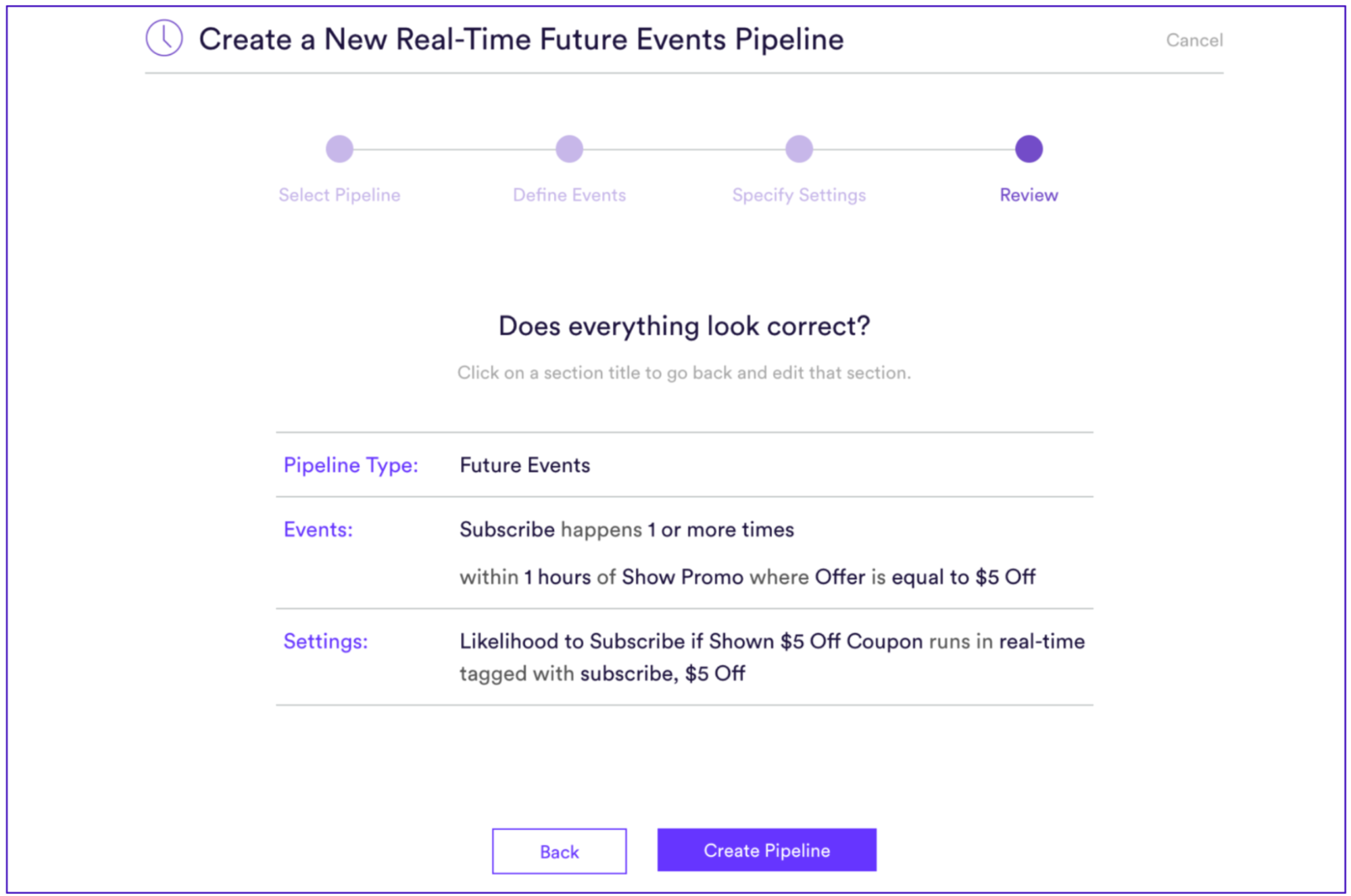
Summary page of creating a real-time future events pipeline predicting the likelihood of a user subscribing within one hour of being shown a $5 off coupon.
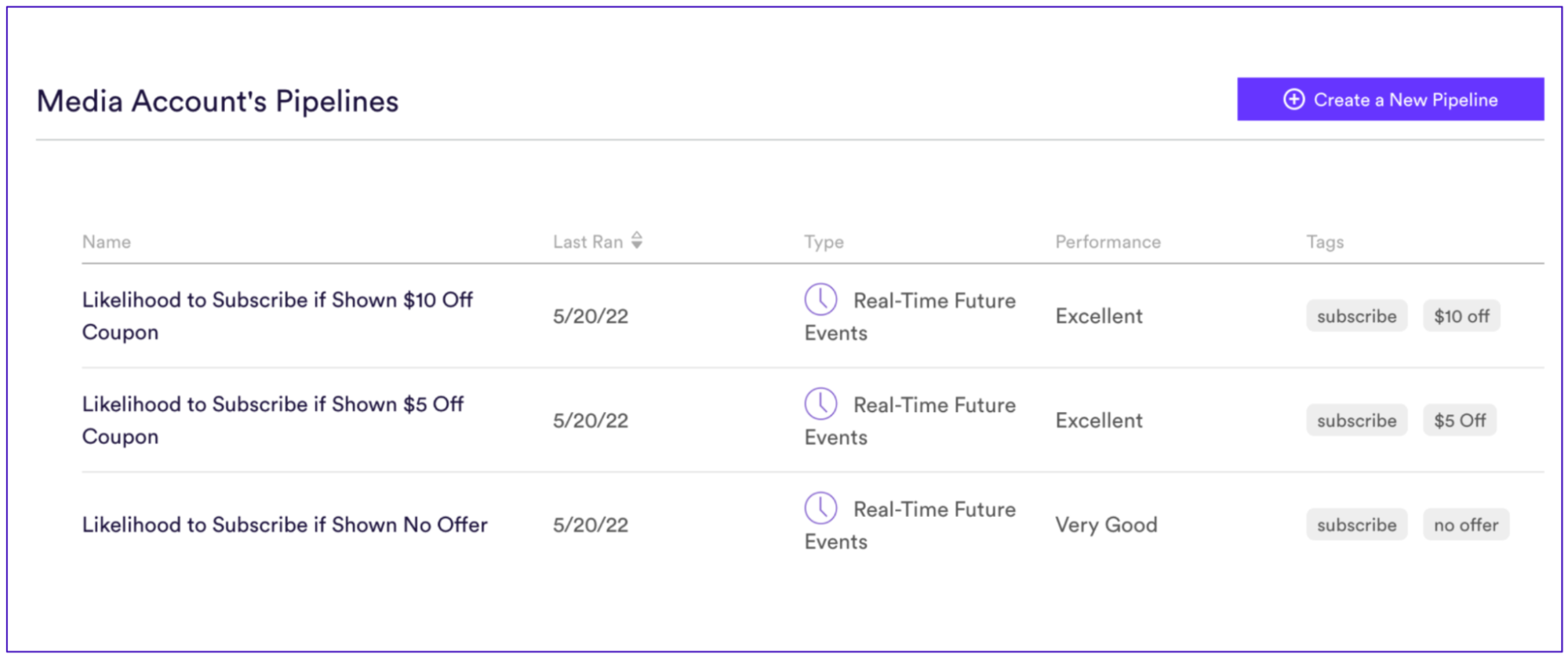
Three completed machine learning pipelines that are set up to predict the likelihood of a user subscribing when shown a $10 off coupon, $5 off coupon, or no offer at all.
After all three real-time future events pipelines are created, the next step is to translate these predictions into decisions. This is achievable by creating a decision project within Cortex, where businesses are able to compare across multiple pipelines in order to choose the most optimal decision. In this example, the most optimal output would be choosing to give the offer that has the highest conversion probability out of the three pipelines available.
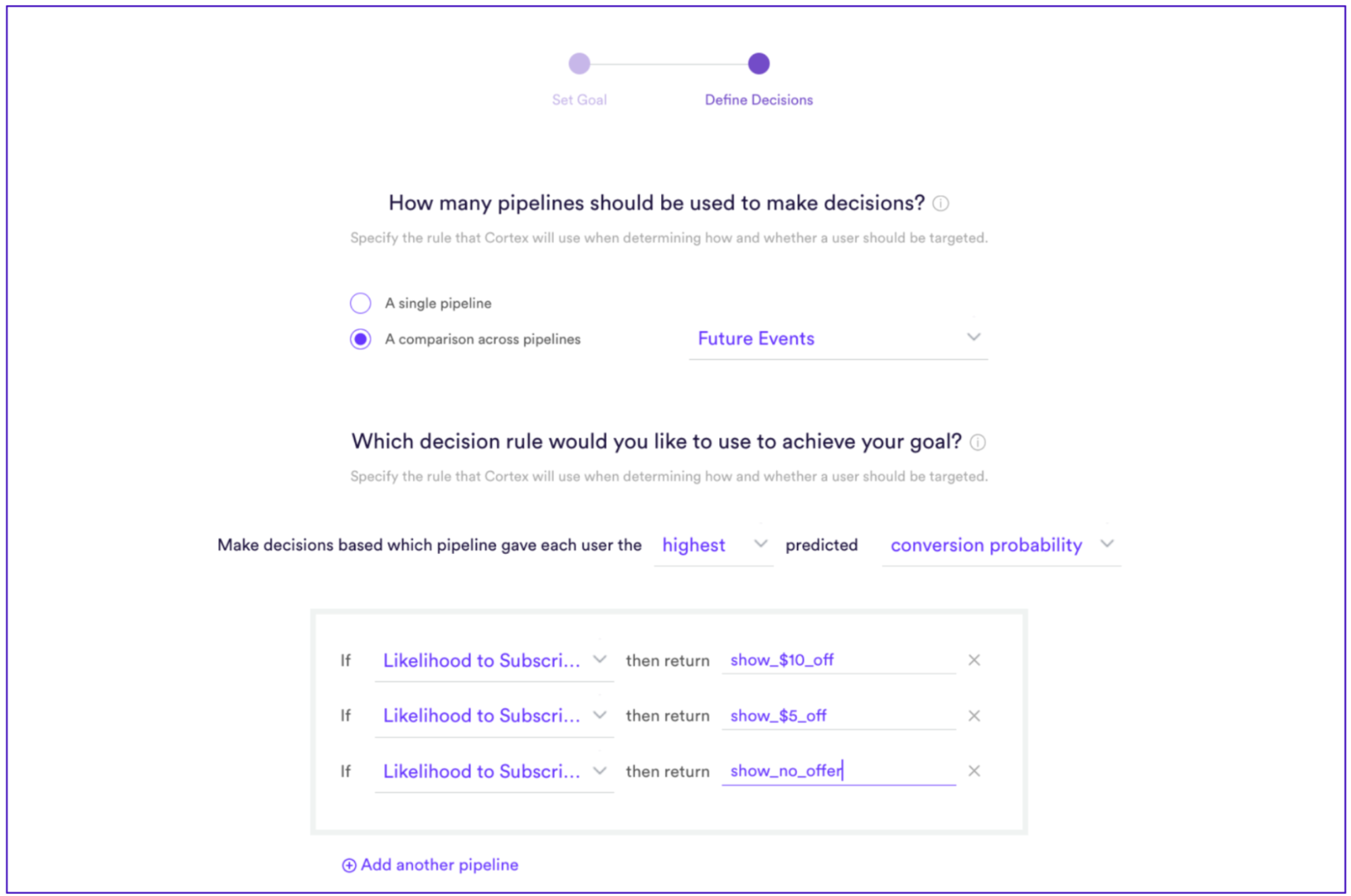
Cortex decision project UI showing how to set up a comparison across the three different real-time future events pipelines we created earlier.
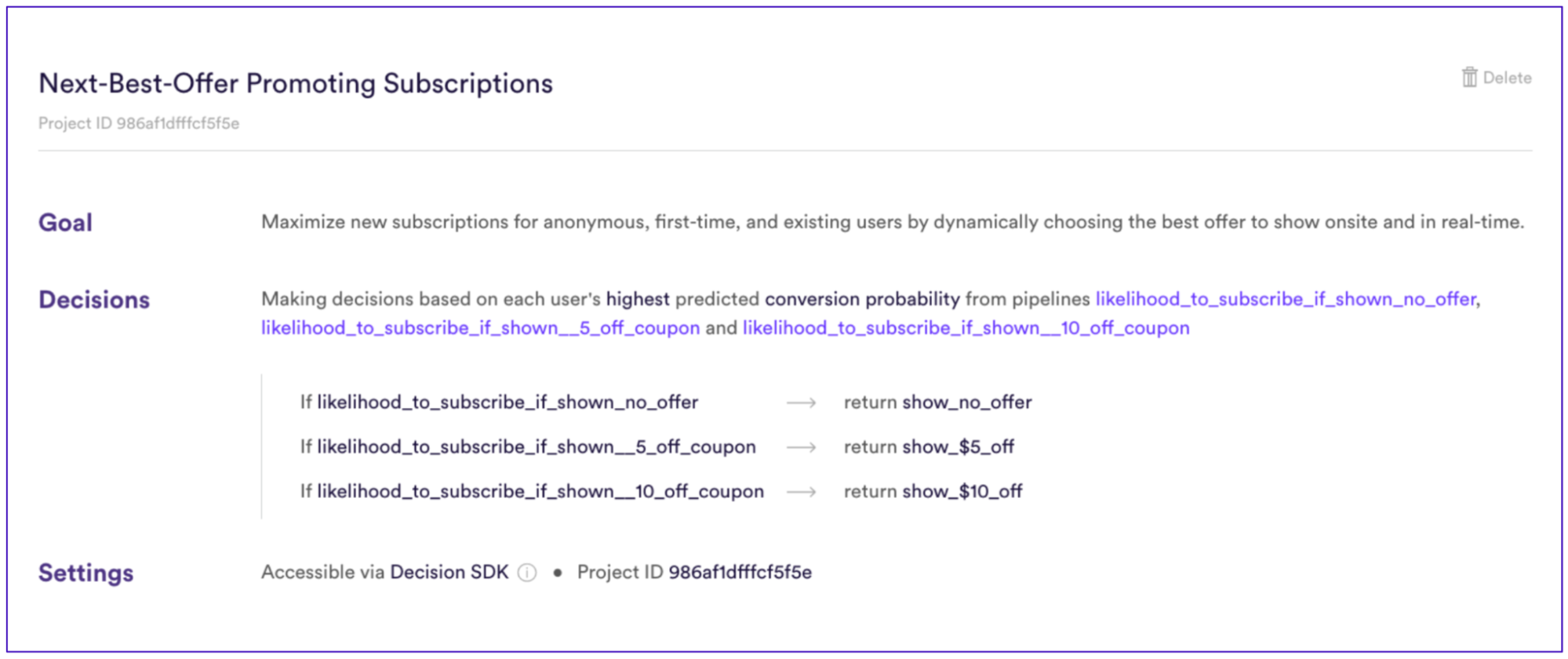
Summary of the decision project optimizing a real-time next-best-offer experience for anonymous, first-time, and existing users.
The final step is to use the Vidora Decisioning SDK to receive a real-time decision for a particular user when they are onsite. For instance, a $10 off coupon would be shown to a user if they had the highest conversion probability to subscribe when shown this specific offer over the other two offers available. By leveraging real-time, in-session data, teams are able to still create a personalized user experience for anonymous and first-time users without the need of any third-party cookies.
Want to Learn More?
One of our main goals with Cortex is to allow marketers and adtech teams to maximize the value of their first-party data and get ahead of the demise of third-party cookies. We want to make it easy for teams to leverage both their real-time data and historical data to continue creating a targeted user experience in a cookie-less world.
If you would like to learn more, please reach out and contact us at info@vidora.com.
